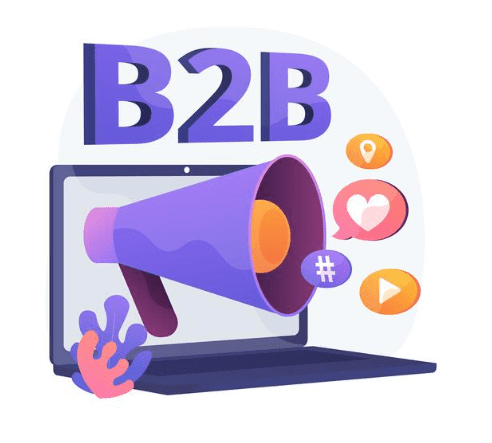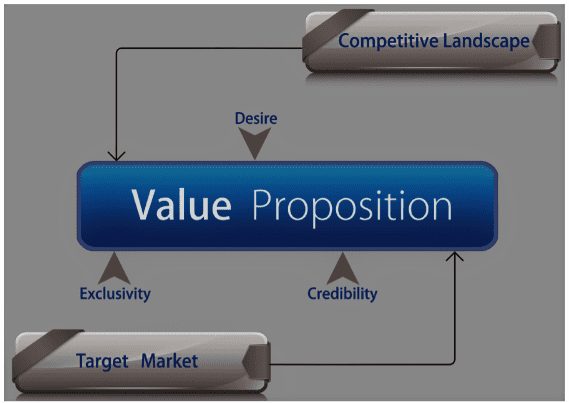Table of Contents
Toggle
How to Drive Sales with Effective B2B Product Marketing?
Effective B2B product marketing can significantly impact sales and drive revenue growth. Developing a comprehensive strategy that includes the following elements is essential to achieve success.
- Firstly, identifying and understanding the target audience is crucial. This involves conducting market research to determine customer needs, preferences, and pain points.
- Secondly, creating a solid value proposition that speaks to the target audience is essential. The value proposition should communicate the benefits of the product clearly and concisely.
- Thirdly, developing a multi-channel marketing campaign that includes a mix of digital and traditional marketing tactics is essential. This can include tactics such as email marketing, social media advertising, and trade shows.
- Finally, tracking and analyzing the results of the marketing campaign is critical. This enables businesses to identify what’s working and needs to be adjusted to achieve optimal results.
Effective B2B product marketing is a process that requires planning, execution, and ongoing optimization to drive sales and revenue growth.
Understanding B2B Product Marketing
B2B product marketing promotes and sells products or services to other businesses or organizations. B2B product marketing aims to create a value proposition that resonates with the target audience, demonstrate how the product or service can solve their business problems, and drive sales.
B2B product marketing differs from B2C marketing in that the target audience is not individual consumers but other businesses or organizations. This means that the messaging and communication channels used to reach the target audience are often more targeted and focused on specific business needs and pain points.
B2B product marketing requires a deep understanding of the target audience, purchasing behavior, and the competitive landscape.
By effectively promoting products or services to businesses, B2B product marketing can help organizations grow their customer base, increase revenue, and improve their bottom line.
Defining B2B product Marketing and its role in Driving sales
B2B product marketing is a process that involves promoting and selling products or services to other businesses or organizations. The primary goal of B2B product marketing is to create a value proposition that resonates with the target audience, demonstrate how the product or service can solve their business problems, and ultimately drive sales.
B2B product marketing is critical in driving sales. Effective B2B product marketing helps businesses create awareness of their products or services and build interest in them. By understanding the target audience’s needs, B2B product marketing can tailor messaging and communication channels to reach them.
B2B product marketing also plays a critical role in building relationships with potential customers. This involves building trust and credibility with the target audience by providing relevant information and content that helps them make informed purchasing decisions.
B2B product marketing is an essential component of any successful sales strategy. By creating effective messaging, building relationships with potential customers, and driving sales, B2B product marketing can help businesses grow their customer base, increase revenue, and improve their bottom line.

Fundamental Principles and Strategies for Effective B2B product marketing
Effective B2B product marketing requires a comprehensive strategy incorporating several fundamental principles and techniques. Here are a few:
- Understand your target audience: Understanding your target audience’s needs, pain points, and purchasing behavior is critical to developing effective marketing messaging. Conduct market research to identify these factors and tailor your messaging accordingly.
- Develop a strong value proposition: A strong value proposition communicates the benefits of your product or service clearly and concisely. It should demonstrate how your product solves the target audience’s business problems and delivers value.
- Use a multi-channel approach: A multi-channel approach that combines both traditional and digital marketing tactics can help reach your target audience effectively. Tactics such as email marketing, social media advertising, and trade shows can all be effective when used strategically.
- Leverage thought leadership: Establishing thought leadership in your industry can help build trust and credibility with your target audience. This can be achieved by publishing opinion leadership content such as whitepapers, webinars, and blog posts.
- Provide exceptional customer support: Excellent customer support can help build long-lasting customer relationships. This involves being responsive and knowledgeable and providing timely solutions to any issues.
- Measure and analyze your results: Tracking and analyzing your marketing campaign’s results is critical to identify what’s working and needs to be adjusted to achieve optimal results. This involves tracking key performance indicators such as website traffic, lead generation, and sales conversion rates.
By following these fundamental principles and strategies, businesses can develop an effective B2B product marketing strategy that drives sales and revenue growth.
Creating a Comprehensive B2B Product Marketing Strategy
Developing a comprehensive B2B product marketing strategy involves several key steps. Here are some of the essential components:
- Define your target audience: Understand their needs, pain points, and buying behavior. This information will inform your marketing messaging and communication channels.
- Develop a value proposition: Develop a value proposition that communicates the benefits of your product or service clearly and concisely. This should demonstrate how your product solves your target audience’s business problems and delivers value.
- Choose your communication channels: Select the most effective communication channels to reach your target audience. This could include a mix of traditional and digital marketing tactics, such as email marketing, social media advertising, and trade shows.
- Create content: Develop a range of content that resonates with your target audience. This could include blog posts, whitepapers, case studies, videos, and webinars. Ensure your content speaks directly to your target audience’s needs and interests.
- Establish thought leadership: Establishing yourself as a thought leader in your industry can help build trust and credibility with your target audience. Consider publishing thought leadership content and speaking at industry events.
- Provide exceptional customer support: Excellent customer support can help build long-lasting customer relationships. Ensure your support team is responsive and knowledgeable and provides timely solutions to any issues.
- Measure and analyze your results: Track and analyze your marketing campaign’s results to identify what’s working and needs to be adjusted to achieve optimal results. Use key performance indicators such as website traffic, lead generation, and sales conversion rates to measure your campaign’s success.
Following these steps, businesses can develop a comprehensive B2B product marketing strategy that drives sales and revenue growth. It’s essential to stay agile and adjust your system based on the results you’re seeing to achieve the best outcomes.
Identifying and targeting your ideal customer personas
Identifying and targeting your ideal customer personas is essential to any successful B2B product marketing strategy. Here are some steps to help you identify and target your ideal customer personas:
- Conduct market research: Conduct market research to identify your target audience’s characteristics, including their industry, job function, company size, and pain points. This information will help you create detailed customer personas.
- Develop customer personas: Create detailed customer personas that outline the demographics, job responsibilities, challenges, goals, and pain points of your ideal customers. Use this information to tailor your marketing messaging to meet their specific needs and interests.
- Use data to refine your personas: Use data from your website, social media, and other marketing channels to refine your personas. This data can help you identify trends and adjust your personas accordingly.
- Tailor your messaging: Once you have developed your personas, tailor your messaging to meet their needs and interests. This includes creating content that directly addresses their pain points and highlighting how your product or service can solve their business problems.
- Choose communication channels: Choose the most effective communication channels to reach your target audience. This could include email marketing, social media advertising, trade shows, and webinars.
- Monitor and adjust: Monitor the results of your marketing campaigns and adapt your messaging and communication channels as needed. This will help ensure you effectively reach your target audience and drive sales.
By identifying and targeting your ideal customer personas, you can create more effective B2B product marketing campaigns that speak directly to your target audience’s needs and interests. This can help drive sales and revenue growth for your business.

Crafting compelling messaging and value propositions
Crafting compelling messaging and value propositions is essential to any successful B2B product marketing strategy. Here are some steps to help you create messaging and value propositions that resonate with your target audience:
- Define your target audience: Understand their needs, pain points, and buying behavior. This information will inform your messaging and value proposition.
- Understand your unique selling proposition: Identify your unique selling proposition (USP), which is the benefit that sets your product or service apart from the competition. Use this as the foundation for your value proposition.
- Create a value proposition: Develop a value proposition that communicates the benefits of your product or service clearly and concisely. This should demonstrate how your product solves your target audience’s business problems and delivers value.
- Use clear and concise messaging: Develop clear and concise messaging using simple language that speaks directly to your target audience’s needs and interests. Use statistics, data, and examples to support your messaging.
- Highlight benefits over features: Focus on highlighting the benefits of your product or service rather than the features. This will help your target audience understand how your product or service can solve their business problems and deliver value.
- Test and iterate: Test your messaging and value proposition with your target audience to see how they respond. Use their feedback to refine your messaging and value recommendation until you achieve the desired results.
By following these steps, businesses can create messaging and value propositions that effectively communicate the benefits of their product or service and resonate with their target audience. This can drive sales and revenue growth, ultimately contributing to the business’s overall success.
Developing a solid product positioning and differentiation strategy
Developing a solid product positioning and differentiation strategy is critical to the success of any B2B product marketing strategy. Here are some steps to help you create a substantial product positioning and differentiation strategy:
- Identify your target audience: Define and understand their needs, pain points, and buying behavior. This information will help you create messaging that resonates with your target audience.
- Identify your unique selling proposition (USP): Identity what separates your product or service. This could be a unique feature, benefit, or solution to a specific problem.
- Analyze your competition: Analyze your competitors’ product positioning and messaging to identify gaps in the market and areas where you can differentiate your product or service.
- Develop a positioning statement: Develop a positioning statement that communicates your USP and how it solves your target audience’s business problems. This statement should be clear, concise, and memorable.
- Highlight your key benefits: Focus on highlighting the key benefits of your product or service rather than just its features. This will help your target audience understand how your product or service can solve their business problems and deliver value.
- Tailor your messaging to your target audience: Tailor your messaging to your target audience’s needs and interests. This will help you connect with them more profoundly and differentiate your product or service from the competition.
- Monitor and adjust: Monitor your competitors and adjust your product positioning and messaging as needed. This will ensure you effectively differentiate your product or service and stay ahead of the competition.
By following these steps, businesses can develop a strong product positioning and differentiation strategy that resonates with their target audience and sets them apart from the competition. This can drive sales and revenue growth, ultimately contributing to the business’s overall success.
Creating engaging content and sales enablement materials
Creating engaging content and sales enablement materials is essential to the success of any B2B product marketing strategy. Here are some steps to help you create compelling content and sales enablement materials:
- Identify your target audience: Define and understand their needs, pain points, and buying behavior. This information will help you create content that resonates with your target audience.
- Develop a content strategy: Develop a content strategy that includes a mix of formats, such as blog posts, whitepapers, case studies, videos, and webinars. Tailor your content to your target audience’s interests and needs.
- Use storytelling: Use storytelling to create engaging content that connects with your target audience emotionally. This can build trust and credibility and make your content more memorable.
- Focus on benefits: Focus on highlighting the benefits of your product or service rather than just its features. This will help your target audience understand how your product or service can solve their business problems and deliver value.
- Create sales enablement materials: Create sales enablement materials that help your sales team effectively communicate your value proposition to potential customers. This could include presentations, case studies, and product demos.
- Provide value: Provide value in your content and sales enablement materials by sharing insights and best practices that help your target audience solve their business problems.
- Monitor and adjust: Continuously monitor the results of your content and sales enablement materials and adapt them as needed. Use feedback from your sales team and target audience to improve your messaging and tactics.
By following these steps, businesses can create engaging content and sales enablement materials that effectively communicate their value proposition and drive sales. This can help increase revenue and contribute to the business’s overall success.
FAQs
How can I measure the success of my B2B product marketing efforts?
Measuring the success of your B2B product marketing efforts is essential to understanding what’s working and what needs to be adjusted to achieve optimal results. Here are some key metrics to help you measure the success of your B2B product marketing efforts:
- Website traffic: Monitor your website traffic to track how many visitors your website receives. This can help you understand how effectively your marketing campaigns drive traffic to your website.
- Lead generation: Measure how many leads you generate from your marketing campaigns. This can help you understand how effectively your campaigns generate interest in your product or service.
- Sales conversion rates: Measure how many leads are converting into customers. This can help you understand your sales team’s effectiveness at closing deals and how well your marketing campaigns drive qualified leads.
- Customer lifetime value (CLV): Measure the CLV of your customers to understand the long-term value of your marketing efforts. This can help you understand the impact of your marketing campaigns on customer retention and revenue growth.
- Return on investment (ROI): Measure the ROI of your marketing campaigns to understand how much revenue you are generating compared to how much you spend on marketing.
- Customer satisfaction: Monitor customer satisfaction to understand how well your product or service meets your target audience’s needs. This can help you identify areas for improvement and help you retain customers.
By monitoring these metrics, you can gain valuable insights into the success of your B2B product marketing efforts and adjust your strategy accordingly to achieve optimal results.

What are some common challenges businesses face when implementing B2B product marketing strategies?
Implementing B2B product marketing strategies can be challenging for businesses. Here are some common challenges companies may face:
- Identifying the target audience: Identifying the target audience and understanding their needs and pain points can be challenging. This is a critical step in developing effective marketing messaging and communication channels.
- Creating compelling content: Creating effective content that resonates with the target audience can be difficult. This requires a deep understanding of the target audience’s needs and interests.
- Measuring ROI: Measuring the ROI of marketing campaigns can be challenging, especially if there is a lag between marketing efforts and revenue growth.
- Keeping up with the latest trends: Keeping up with the latest marketing trends and technologies can take time and effort, especially for smaller businesses with limited resources.
- Adjusting to changes in the market: Markets are constantly evolving, and businesses need to be agile to adapt their marketing strategies to stay ahead of the competition.
- Building and maintaining a solid brand: Building and maintaining a strong brand that resonates with the target audience can be challenging. This requires consistent messaging and a solid visual identity.
By anticipating and addressing these challenges, businesses can overcome obstacles and develop effective B2B product marketing strategies that drive sales and revenue growth.
How can I use customer feedback and insights to improve my B2B product marketing approach?
Customer feedback and insights are essential to improving your B2B product marketing approach. Here are some steps to help you use customer feedback and insights to enhance your marketing approach:
- Collect customer feedback: Collect customer feedback through surveys, interviews, and social media channels. This feedback can help you understand your customers’ needs, pain points, and preferences.
- Analyze customer feedback: Analyze customer feedback to identify patterns and trends. This can help you identify areas where you need to improve your product or service and adjust your marketing messaging accordingly.
- Refine your messaging: Use customer feedback to refine your messaging and positioning. This will help you better communicate the value of your product or service to your target audience.
- Develop content: Develop content that addresses your customers’ pain points and needs. This can help you build trust and credibility with your target audience.
- Create a feedback loop: Establish a feedback loop with your customers to continually gather feedback and adjust your marketing approach accordingly. This will help you stay agile and responsive to your customers’ needs.
- Monitor and adjust: Continuously monitor your marketing efforts and adjust your approach as needed based on customer feedback and market trends.
Businesses can use customer feedback and insights to improve their B2B product marketing approach, create more effective marketing messaging, and drive sales and revenue growth.
- Success vs. Significance: Understanding the Difference and Achieving Both - October 1, 2023
- 8 Steps to SaaS Success: From Idea to Business - September 30, 2023
- The Importance of Testing in SaaS: Ensure Quality and Success - September 29, 2023